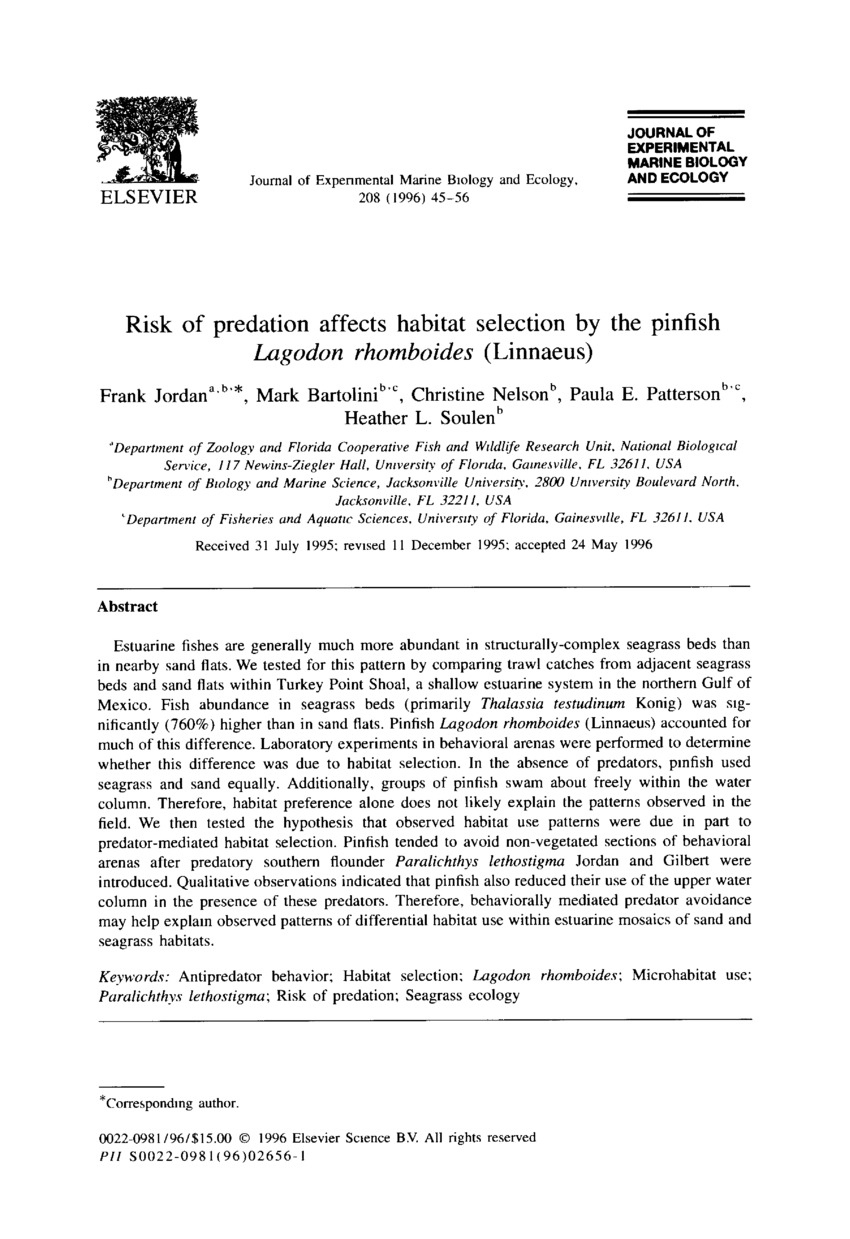Journal Article
AccessRisk of Predation Affects Habitat Selection by the Pinfish Logodon rhomboids (Linaeus)
Estuarine fishes are generally much more abundant in structurally-complex seagrass beds than in nearby sand flats. We tested for this pattern by comparing trawl catches from adjacent seagrass beds and sand flats within Turkey Point Shoal, a shallow estuarine system in the northern Gulf of Mexico. Fish abundance in seagrass beds (primarily Thalassia testudinum Konig) was significantly (760%) higher than in sand flats. Pinfish Lagodon rhomboides (Linnaeus) accounted for much of this difference. Laboratory experiments in behavioral arenas were performed to determine whether this difference was due to habitat selection. In the absence of predators, pinfish used seagrass and sand equally. Additionally, groups of pinfish swam about freely within the water column. Therefore, habitat preference alone does not likely explain the patterns observed in the field. We then tested the hypothesis that observed habitat use patterns were due in part to predator-mediated habitat selection. Pinfish tended to avoid non-vegetated sections of behavioral arenas after predatory southern flounder Paralichthys lethostigma Jordan and Gilbert were introduced. Qualitative observations indicated that pinfish also reduced their use of the upper water column in the presence of these predators. Therefore, behaviorally mediated predator avoidance may help explain observed patterns of differential habitat use within estuarine mosaics of sand and seagrass habitats.
Publisher - Elsevier
Subjects - Fish, Pinfish, Logodon rhomboids; Habitat
Citation: Jordan F, Bartolini M, Nelson C, Patterson PE, Soulen HL. 1997. Risk of Predation Affects Habitat Selection by the Pinfish Logodon rhomboids (Linaeus). J. Exp. Mar. Biol. Ecol.; 208(1-2):45-56 http://dx.doi.org/10.1016/S0022-0981(96)02656-1
